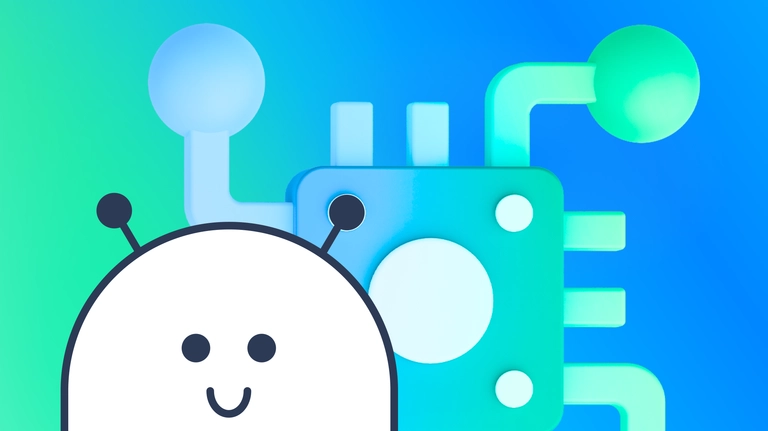
How do chatbots work? Chatbot architecture and algorithms
All you need to learn before building a chatbot for your business: what a chatbot is, how it works, what chatbot architecture is, and more.

Chatbots are picking up steam by the day. In fact, 74% of shoppers say they prefer talking to a chatbot if they’re looking for answers to simple questions. And it seems like this trend will continue growing, especially for retail companies.
But if you’re new to chatbots, you’re probably looking to get informed before you build one for your own business. In this article, that’s exactly what we’ll do. We’ll go over what a chatbot is, how it works, what chatbot architecture is, and more. Let’s get started.
What is a chatbot?
A chatbot is a computer program that simulates human conversation. It can operate both through text and voice, but chatbots are normally used in text form.
Chatbots are great at communicating simple yet repetitive information. Most commonly, they are used in customer service. For example, a chatbot might help you find your tracking number, learn about the return policy, find a product, and other FAQs and easy questions. However, nowadays, chatbots are getting smarter. You can build a chatbot to handle more complex issues and even use artificial intelligence (AI) and machine learning to understand customer service requests from written text.
However, sometimes customers have requests beyond the chatbot’s capabilities. In those cases, automation typically transfers them to a live agent trained to deal with more complex issues.
Companies like to use chatbots because they’re cheap and help to reduce the number of people needed to deal with customers. On the other hand, customers like bots because they’re available 24/7 and can give them answers immediately.
How do chatbots work?
At Chatfuel, you can set up a chatbot for your website, Facebook Messenger, Instagram, or WhatsApp. But regardless of the platform, at their core, they’re the same.
In a nutshell, the way a chatbot works is simple. First, a customer uses an Entry Point to start a conversation, after which the chatbot goes through a flow you set up to communicate with the customer and resolve their questions or problems.
At Chatfuel, Entry Point is where the customers start interacting with the chatbot. Examples include the following:
Bot link. You sent a customer the direct link that opens a conversation with a chatbot;
Facebook Comments. A user comments on one of your Facebook posts and triggers a bot to reply to them or message them;
Instagram DM. A follower sends you a private message, which opens a conversation with a bot.
A flow, on the other hand, is a conversational scenario your users go through when interacting with one of your bots. Flows are different based on what their purpose is. For example, you can have different flows for lead generation, answering frequently asked questions (FAQs), product recommendations, feedback collection, and many other purposes. These flows can all be part of one chatbot or be separate from each other. See below an example of a simple FAQs flow connected to the Facebook Page Entry Point.
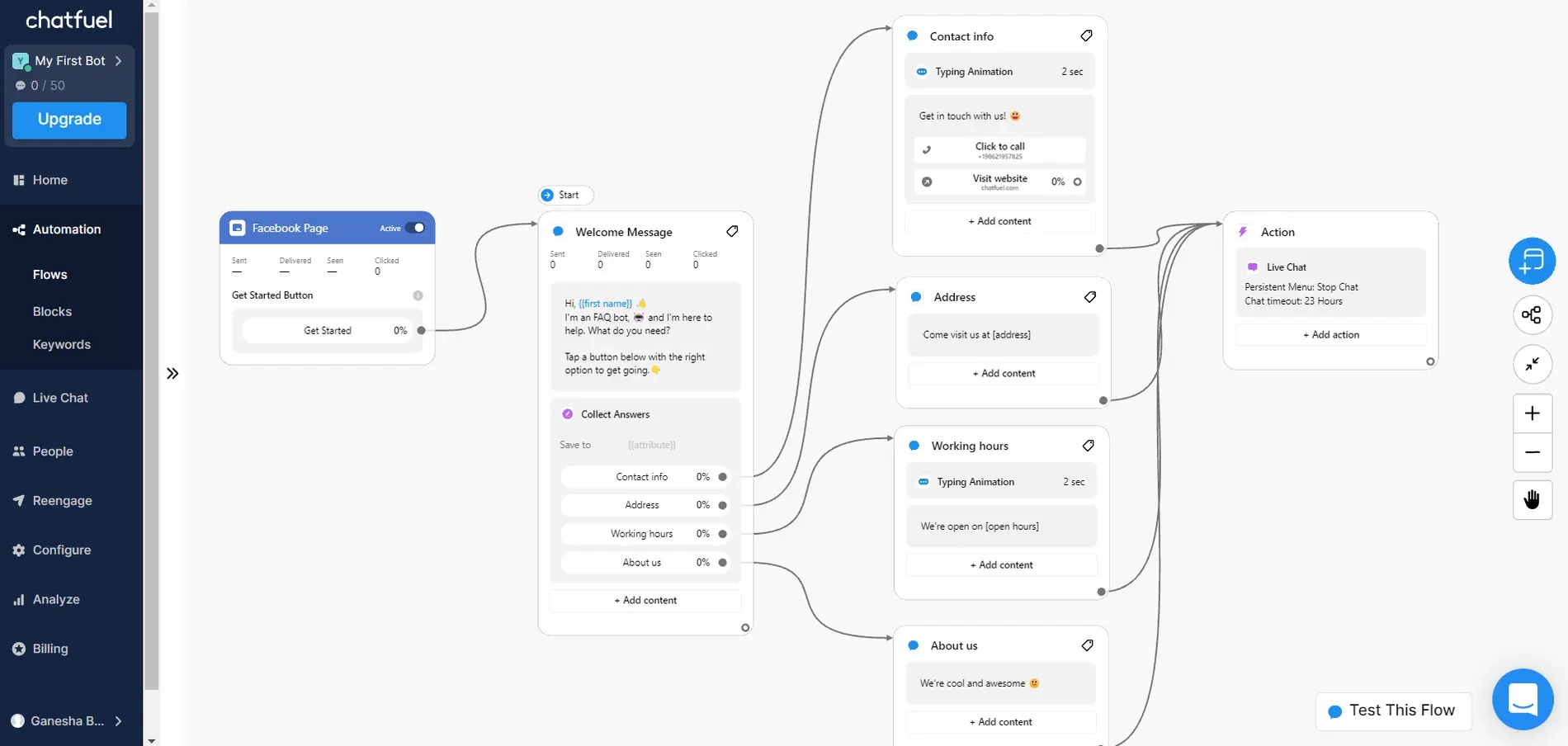
If you’re setting up your first bot, you can use our free chatbot templates with the most common flows you might need. Simply choose your industry and duplicate one of the templates. You’ll be up and running in no time.
What is chatbot architecture?
Chatbot architecture is the backend that makes your chatbot work. It might differ on a case-by-case basis, but this is what a chatbot built with Chatfuel will generally consist of:
Entry Points
As mentioned earlier, these are ways through which a customer can start a conversation with a chatbot.
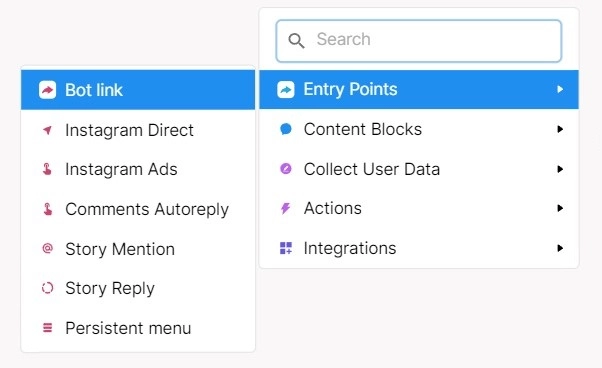
Blocks
A block is a message or a configured block action. Flows, which we mentioned earlier, consist of a series of blocks.
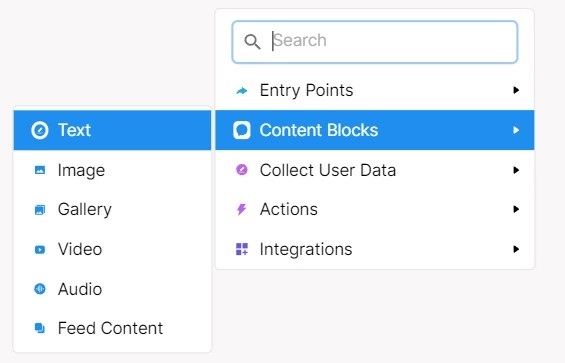
Actions
These are essentially the glue that hold your chatbot architecture together. You can use actions to build IF/THEN scenarios. Example: If a customer is stuck in a flow → Notify Admin via Email.
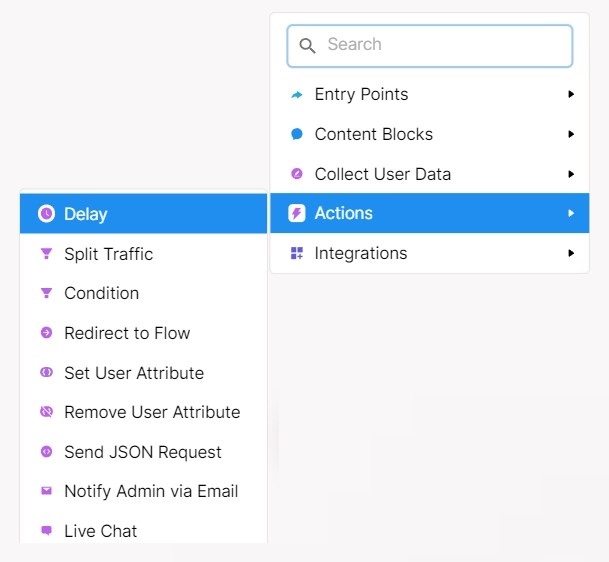
Integrations
Use these handy integrations to book Calendly meetings or collect customer information in Google Sheets.
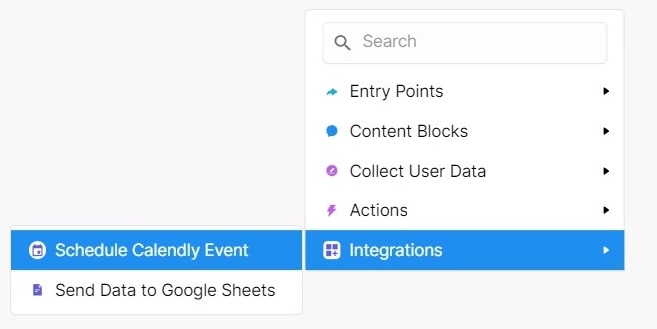
AI chatbots: how they work
AI chatbots differ from rule-based chatbots due to their ability to understand human language. What makes this possible are algorithms such as natural language processing (NLP), which is a mix of linguistics, computer science, machine learning, and AI.
At Chatfuel, what gives our chatbots AI-like capabilities is our Keywords feature. The way it works is you can set up certain keyword groups and then what the chatbot should respond or do in response to those keywords. For example, let’s say you want the chatbot to send customers your phone number if they’re asking about it. Here’s what that would look like in the Keywords tab:

Keywords can be refined by using one of the 3 settings: Similar to, Contains, or Matches.
With a mix of regular chatbot attributes plus the AI-like Keyword feature, you can provide your customers a hybrid experience that you can be sure they’ll be amazed by.
AI chatbot algorithms
There are many types of algorithms out there, including those for AI chatbots. Chatfuel’s Keyword feature is also a type of algorithm — it uses synonyms, context, and past data to understand what exactly the customer wants.
Popular chatbot algorithms include the following:
Sequence to Sequence (seq2seq) model;
Natural Language Processing (NLP);
Long Short Term Memory (LSTM);
Recurrent neural networks (RNN);
Artificial neural networks (ANNs)
Pattern matching.
Each of the above aims to have chatbots seamlessly work in the background and empower the conversation. To the point that the customer feels like they are talking to a human.
This, of course, is no easy task. As simple as a conversation is to us, computers need to be trained to perform sentiment analysis and understand context, intent, and phrasing.
Build your first chatbot with Chatfuel
Ready to jump in and build a chatbot that can work for you?
There’s no better way than with one of the biggest no-code chatbot builders in the world. That’s right, with our user-friendly user interface, you can build a chatbot with no previous experience or programming required!
Use chatbots to reduce costs, save time, increase conversion rates, and improve your customers’ experience. You’ll be in great company — our customers include Netflix, Visa, Adidas, and many others.
Sign up for a free trial today.
